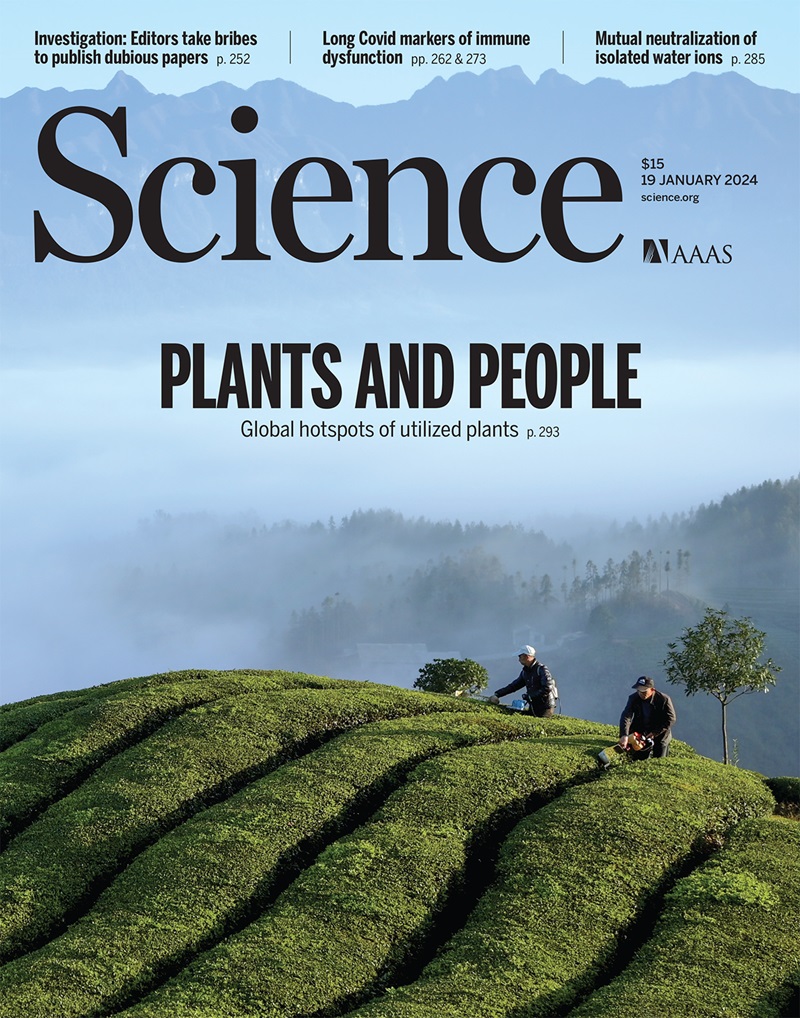COVID-19 大流行干预措施重塑了季节性流感病毒的全球传播方式
IF 44.7
1区 综合性期刊
Q1 MULTIDISCIPLINARY SCIENCES
引用次数: 0
摘要
季节性流感病毒的全球动态为设计监控、干预和疫苗接种策略提供了信息。COVID-19 大流行为我们提供了一个绝佳的机会来评估流感病毒在全球范围内的传播是如何受到人类行为变化的干扰的。我们将分子、流行病学和国际旅行数据结合起来,发现大流行的爆发导致了国际流感病毒系运动强度和结构的变化。在流感大流行期间,南亚作为甲型流感病毒的系统发育主干地发挥了重要作用,而西亚则维持着乙型流感/维多利亚流感的循环。我们探讨了大流行期间流感病毒系动态的驱动因素以及乙型/山形系可能灭绝的原因。3 年后,随着全球航空交通的恢复,除乙型/山形外,流感病毒系的区域间移动强度恢复到了大流行前的水平,这凸显了全球流感病毒系扩散模式对重大干扰的稳健性。本文章由计算机程序翻译,如有差异,请以英文原文为准。
COVID-19 pandemic interventions reshaped the global dispersal of seasonal influenza viruses
The global dynamics of seasonal influenza viruses inform the design of surveillance, intervention, and vaccination strategies. The COVID-19 pandemic provided a singular opportunity to evaluate how influenza circulation worldwide was perturbed by human behavioral changes. We combine molecular, epidemiological, and international travel data and find that the pandemic’s onset led to a shift in the intensity and structure of international influenza lineage movement. During the pandemic, South Asia played an important role as a phylogenetic trunk location of influenza A viruses, whereas West Asia maintained the circulation of influenza B/Victoria. We explore drivers of influenza lineage dynamics across the pandemic period and reasons for the possible extinction of the B/Yamagata lineage. After a period of 3 years, the intensity of among-region influenza lineage movements returned to pre-pandemic levels, with the exception of B/Yamagata, after the recovery of global air traffic, highlighting the robustness of global lineage dispersal patterns to substantial perturbation.
求助全文
通过发布文献求助,成功后即可免费获取论文全文。
去求助
来源期刊

Science
综合性期刊-综合性期刊
CiteScore
61.10
自引率
0.90%
发文量
0
审稿时长
2.1 months
期刊介绍:
Science is a leading outlet for scientific news, commentary, and cutting-edge research. Through its print and online incarnations, Science reaches an estimated worldwide readership of more than one million. Science’s authorship is global too, and its articles consistently rank among the world's most cited research.
Science serves as a forum for discussion of important issues related to the advancement of science by publishing material on which a consensus has been reached as well as including the presentation of minority or conflicting points of view. Accordingly, all articles published in Science—including editorials, news and comment, and book reviews—are signed and reflect the individual views of the authors and not official points of view adopted by AAAS or the institutions with which the authors are affiliated.
Science seeks to publish those papers that are most influential in their fields or across fields and that will significantly advance scientific understanding. Selected papers should present novel and broadly important data, syntheses, or concepts. They should merit recognition by the wider scientific community and general public provided by publication in Science, beyond that provided by specialty journals. Science welcomes submissions from all fields of science and from any source. The editors are committed to the prompt evaluation and publication of submitted papers while upholding high standards that support reproducibility of published research. Science is published weekly; selected papers are published online ahead of print.
 求助内容:
求助内容: 应助结果提醒方式:
应助结果提醒方式:


